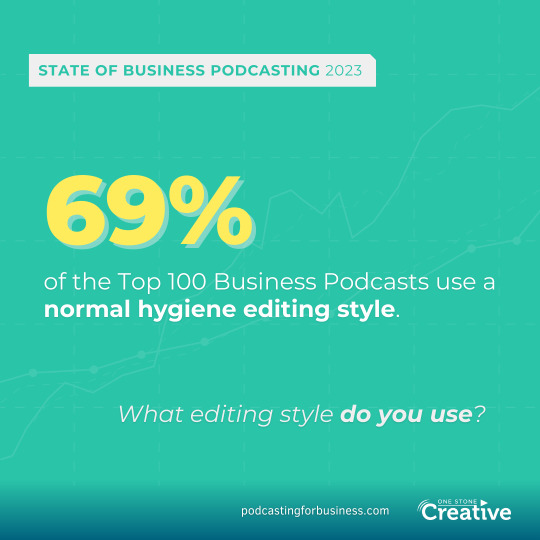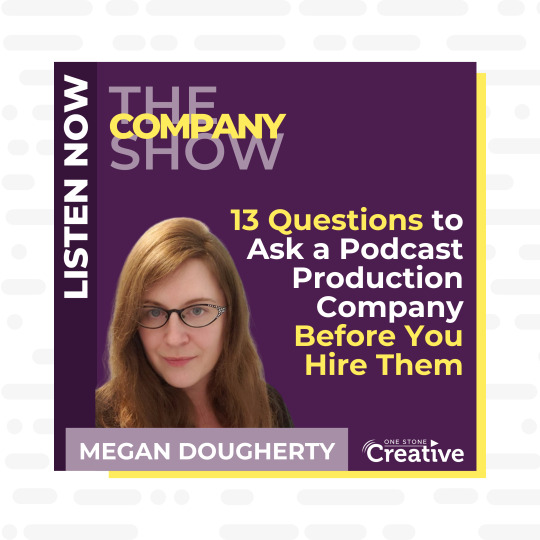Don't wanna be here? Send us removal request.
Text

Let's look at the editing style used by the Top 100 Business Podcasts: hygiene, minimal, and highly produced.
Before we talk numbers, I want to put forward that really good editors are going to make a highly produced show sound like it was recorded off the cuff and directly uploaded to your feed—even though in reality, it took a huge amount of time and effort to produce it.
We cannot know for sure what editing styles and strategies were used—we're going by what it sounded like, and that is our interpretation.
This year, it sounded like normal hygiene style editing was by far the most prevalent, with 69% of shows using it—this is slightly down from 73% last year.
This is a type of editing that takes a conversation and makes it sound like a particularly eloquent and smooth-flowing chat by normal people. The effort that goes into creating that affect is, as mentioned above, something we have no way of knowing.
I was delighted to see that the shows that seem to put no thought whatsoever into editing are down from 21% to 10%. The listening world thanks these shows for not making us listen to unedited episodes.
I would like to, if any of the top 100 hosts are reading this, remind 4 of you who have otherwise great editing to buy a pop filter or back off your mic an inch or two.
The final group was highly produced shows (21% this year compared to 14% last year)—this is a narrative, musically enhanced, news, or documentary style of editing.
This is out of the question for most company shows—the production costs are too high for the benefit the podcast brings, but when it is possible, it can be a lot of fun and allow everyone involved a lot of creativity while creating high-value assets for a business.
—
If you want to learn more about what the top 100 business podcasts are doing, visit the link below to access the full report!
#podcastingforbusiness #businesspodcasts #podcastediting #podcastresearch #podcastdata
0 notes
Text

Podcasting can be a really pleasant part of your workflow if you’re working with a great producer or company—but first, you need to overcome the hurdle of finding a great match.
In this episode of The Company Show, we’re going over things to consider and questions to ask so you can determine if your potential producer can help you create a show that reflects well on your company and achieves important goals.
This is an update of a 2022 episode where I presented eight essential questions to ask—now, I’ve bumped it up to 13 to make sure all the bases are covered and help you make the best decision and avoid the potential headaches of choosing the wrong production company.
So, if you want to start a podcast from scratch or if you’re thinking of switching to a service provider that matches your workflow and goals, I highly recommend that you check this out!
Visit the link in our bio or use the one below to listen to the full episode or read the blog version:
#TheCompanyShow #PodcastingForBusiness #podcastproducer #podcastproduction #podcastagency
0 notes
Text

After two years of decreasing usage, I think we can safely say that hooks are officially out.
A hook, or sizzle clip, is a piece of audio either recorded separately by the host or pulled from the main body of the episode that is played before the main intro. It’s a great way to set the tone of a podcast and pique curiosity, but they seem to have fallen out of favor among the Top 100 Business Podcasts.
If I had to guess why, I would say it is the increasing presence of short-form video as a promotional and engagement piece. Most shows create multiple "hook" pieces of content and send them out to the world, meaning there is already a tone set when people hit play.
How about you? Do you still start your episodes with a hook?
—
If you want to learn more about what the top 100 business podcasts are doing, visit the link below to access the full report!
#podcastingforbusiness #businesspodcasts #podcastresearch #podcastdata
1 note
·
View note